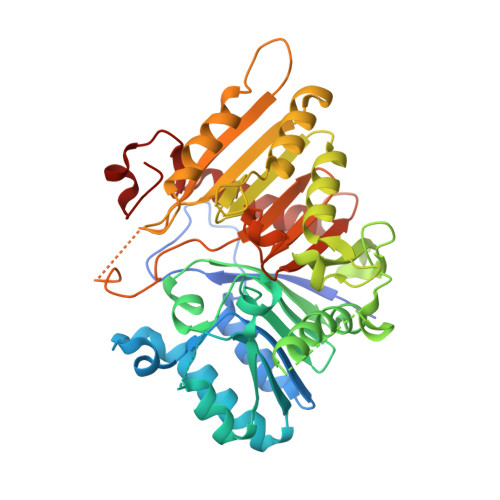Lysosomal endonuclease RNase T2 and PLD exonucleases cooperatively generate RNA ligands for TLR7 activation.
Berouti, M., Lammens, K., Heiss, M., Hansbauer, L., Bauernfried, S., Stockl, J., Pinci, F., Piseddu, I., Greulich, W., Wang, M., Jung, C., Frohlich, T., Carell, T., Hopfner, K.P., Hornung, V.(2024) Immunity 57: 1482
- PubMed: 38697119
- DOI: https://doi.org/10.1016/j.immuni.2024.04.010
- Primary Citation of Related Structures:
8S86 - PubMed Abstract:
Toll-like receptor 7 (TLR7) is essential for recognition of RNA viruses and initiation of antiviral immunity. TLR7 contains two ligand-binding pockets that recognize different RNA degradation products: pocket 1 recognizes guanosine, while pocket 2 coordinates pyrimidine-rich RNA fragments. We found that the endonuclease RNase T2, along with 5' exonucleases PLD3 and PLD4, collaboratively generate the ligands for TLR7. Specifically, RNase T2 generated guanosine 2',3'-cyclic monophosphate-terminated RNA fragments. PLD exonuclease activity further released the terminal 2',3'-cyclic guanosine monophosphate (2',3'-cGMP) to engage pocket 1 and was also needed to generate RNA fragments for pocket 2. Loss-of-function studies in cell lines and primary cells confirmed the critical requirement for PLD activity. Biochemical and structural studies showed that PLD enzymes form homodimers with two ligand-binding sites important for activity. Previously identified disease-associated PLD mutants failed to form stable dimers. Together, our data provide a mechanistic basis for the detection of RNA fragments by TLR7.
Organizational Affiliation:
Gene Center and Department of Biochemistry, Ludwig-Maximilians-Universität, Munich, Germany.














